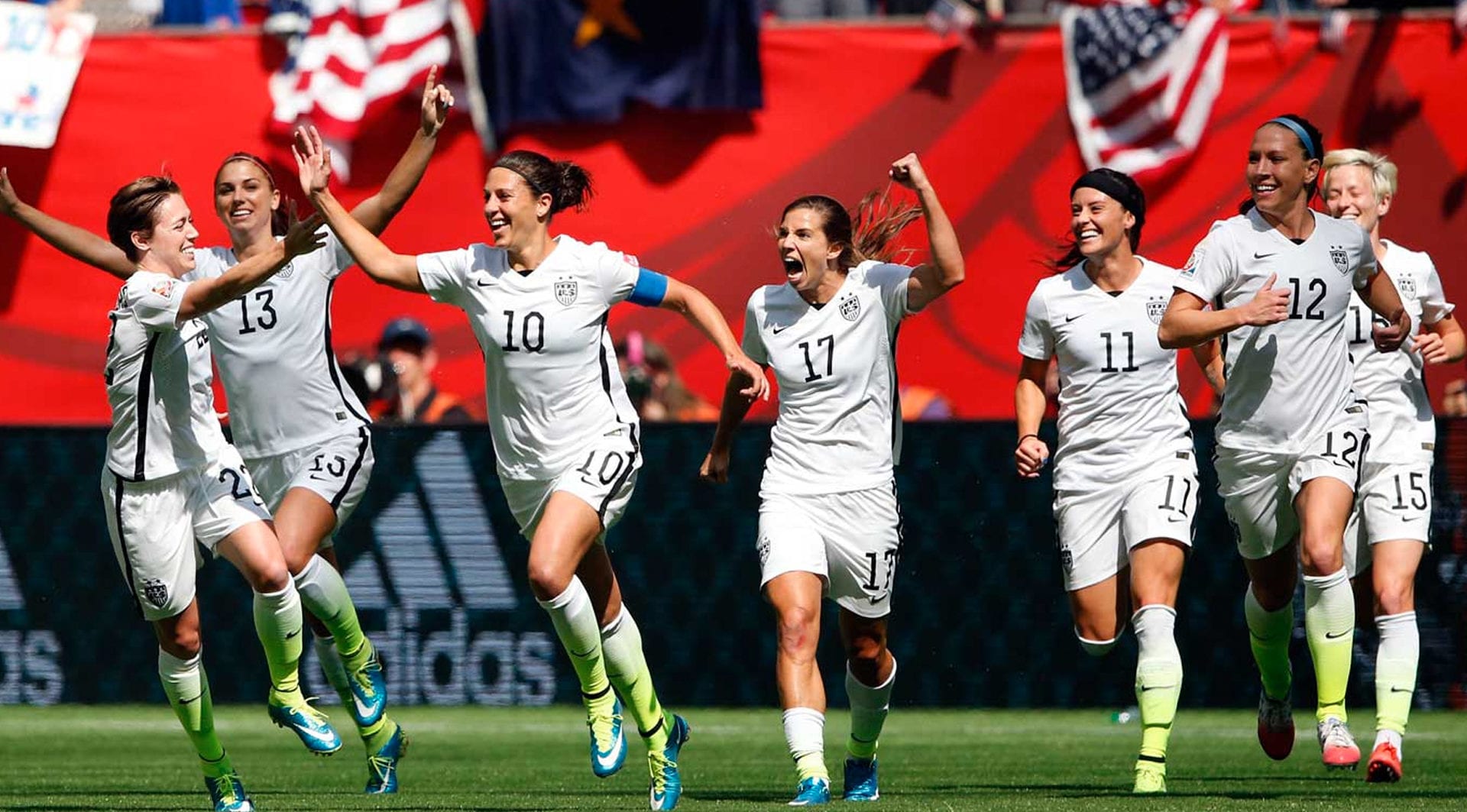Watching the Women’s World Cup in Paris
The U.S. Beats France and Heads to the Finals

It’s 91 degrees in Paris when I bolt down the metro steps, and a cool breeze is wafting through the subway tunnels, cutting mercifully through the evening’s dense humidity. When the train doors part, I’m greeted by a haphazard sea of red, white, and blue, and sandwich myself between a family in matching “YO USA” T-shirts and a young Parisian wrapped in a French flag nibbling gingerly on a baguette. Everyone is smiling.
Outside of the Parc des Princes stadium, cafés swell with patriotic Elvises and Joan of Arc look-alikes gulping down pintes de bière before the starting whistle. As we make our way to the stands, my Dutch companion declares that he’s throwing his support behind the French team, knowing full well I’ve been hyperventilating over the strength and form of the U.S. women since the tourney began. He breaks out into a chant of “Allez Les Bleus,” and I take a deep breath, wondering if we’ll still like each other by the end of the match. At 9 p.m., the crowd is on its feet, and the thunderous roar of anticipation throbs in the summer heat.
By now, you’ve probably heard the results of the marquee 2019 Women’s World Cup matchup between France and the U.S. — a quarterfinal throwdown between the host country and the defending world champions for a spot in the semis. With unrelenting physicality and in tight formation, the U.S. women thwarted France’s prospects in a 2-1 nail-biter that underscored the relevancy and quality of women’s soccer, elevating “The Beautiful Game” to such great heights. Being among the 45,595 fans in attendance was a transformative experience, set against the backdrop of a stunning host city that offered up a dizzying array of cuisine and culture between matches.
The Fédération Internationale de Football Association (FIFA) estimates that by the end of the four-week tournament, nearly 1 billion viewers will have tuned in globally and across all platforms to catch the fervor of the 2019 WWC (up from 750 million in 2015) ― a staggering growth spurt that will make it even more difficult for the association to justify doling out a mere 7.5 percent of the prize money awarded to the athletes’ male counterparts. The record-breaking ratings will also prove useful as the fight for gender parity in women’s soccer plays out in courts all around the world, with the U.S. Women’s National Soccer Team leading the charge alongside countries like Norway, Australia, Sweden, and Nigeria.
Over the past few weeks, viewers have witnessed the depth and intricacies of the female athlete in all of its complex glory, from the instinctive power of Chile’s behemoth goalkeeper Christiane Endler; to the unapologetic ferocity of Australian forward Sam Kerr; and the extraordinary stamina of Brazilian forward Marta Vieira da Silva; or the forthright leadership of U.S. co-captain Megan Rapinoe. In France’s central defender Wendie Renard, who gifted a devastating own goal to Norway in a group stage match only to come back and head a powerhouse goal in the quarterfinals, we witnessed relentless perseverance, and when Cameroon defender Augustine Ejangue resorted to spitting on England’s Toni Duggan in a compulsive act of frustration, we learned that yes, women can play ugly, too. (To her credit, Ejangue later issued a public apology.)
Whatever the outcome of Sunday’s final, after heartbreak or elation gives way to our return to daily life, it’s already glaringly clear that FIFA’s WWC is blazing down a new path, and that our roles — as engaged supporters and active participants — are paramount to the future of women’s sports, whose time is now.
Marta drives the point home: “The women’s game depends on you to survive. So think about that. Value it more. Cry in the beginning so you can smile in the end.”



